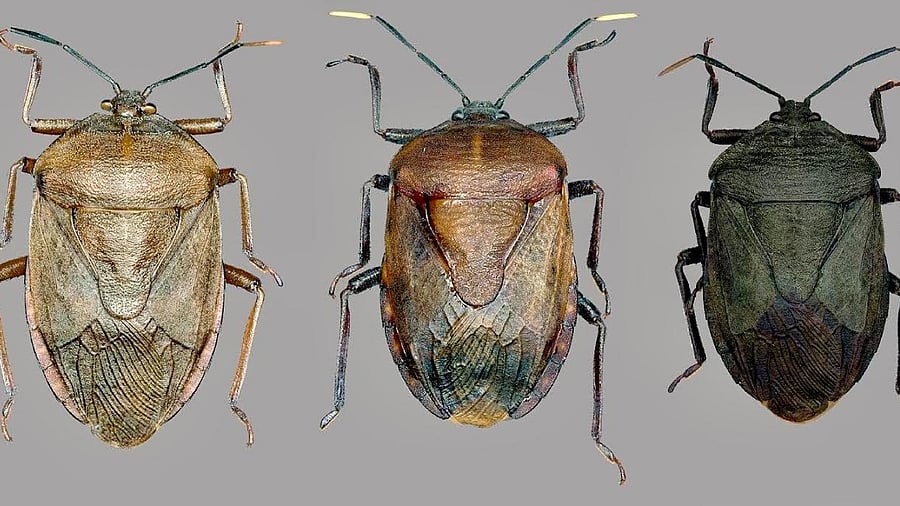
(L-R): Coridius insperatus, Coridius adii, and Coridius esculentus/
Credit: Special arrangement
Bengaluru: Entomologists from Ashoka Trust for Research in Ecology and the Environment (ATREE), Bengaluru, have discovered three new species of edible bugs traditionally consumed by indigenous people of North-East. Their discovery underlines the urgency to document and protect traditional knowledge of insects across applications.
The research emphasises that several of the species, while popular as food among the indigenous communities, are undocumented, and calls for stronger conservation practices in the region.
The team documented more than 500 species of edible insects – including grasshoppers, caterpillars, beetles, termites, bees, wasps, ants, cicadas, and aquatic insects – from across North-East India. A closer look at ‘stink bugs’, sold in markets during certain seasons, led the researchers to their identification as members of the genus Coridius, of the family Dinidoridae (Hemiptera).
Ranging from 15 mm to 25 mm in size, the Coridius bugs mainly feed on plant sap. The genus comes in 35 plant-feeding terrestrial species, found in the Afrotropical and Indo-Malayan regions.
Going beyond conventional taxonomic methods to address the complexity of the genus, the entomologists adopted an integrative approach – they combined phylogenetics (the study of evolutionary relationships among biological groups), morphometric analysis (a quantitative study of landforms), and classical taxonomy to zero in on the three new species, all from Arunachal Pradesh: Coridius adii, Coridius esculentus, and Coridius insperatus.
The study revealed multiple undescribed lineages within the genus that could, potentially, be new species. With the new findings, India now has 13 reported Coridius species.
The research team was led by Priyadarsanan Dharma Rajan, a senior fellow at ATREE, and comprised Swapnil Boyane, Sandeep Sen, and Pavan Kumar Thunga from ATREE, and Hemant Ghate from Modern College, Pune. Their work has been published in the open-access journal PLOS ONE.
Preserving for posterity
In North-East India, entomophagy – the practice of eating insects – is both tradition and sustenance, with many communities using insects as food and medicine. Priyadarsanan, senior author of the paper, said these invaluable knowledge resources needed to be codified and protected.
“Many of these species have not been identified. They have potential in pharmaceutical applications. Indigenous knowledge has to be codified and preserved to ensure that the communities remain stakeholders. Then, there is the issue of side effects caused by the consumption of some of these insects – this has to be addressed through chemical ecological studies and high throughput screening of the insects consumed,” he told DH.
Consumption of some of the darker-coloured bugs was found to have a neurotoxic effect, with the affected people becoming photophobic. They showed signs of wanting to hide under carpets or beds, like bugs that hide under stones or retreat into cracks. These bugs were identified under the new species, Coridius esculentus.
Consuming another bug, now identified as Coridius chinensis, was also reported to have caused dizziness and nausea in some of the users.
The team named Coridius adii in honour of the Adi tribe; the community inhabits mainly along the Siang Valley and consumes this species of bugs. Insperatus – “unexpected" in Latin – is a nod to the surprise involved in the discovery of a species that is noted for its distinct antennae and its copper-like dorsal colouration.
The researchers noted that insects feature in the diet of around two billion people across the world and more than 2,000 insect species are marked as edible. “The findings are important because they could help mainstream the idea of insects as a protein source to, at least, complement the environmentally unsustainable livestock production,” Priyadarsanan said.
The study was supported by the Department of Biotechnology through a research project titled Bio-resource and Sustainable Livelihoods in North-East India.